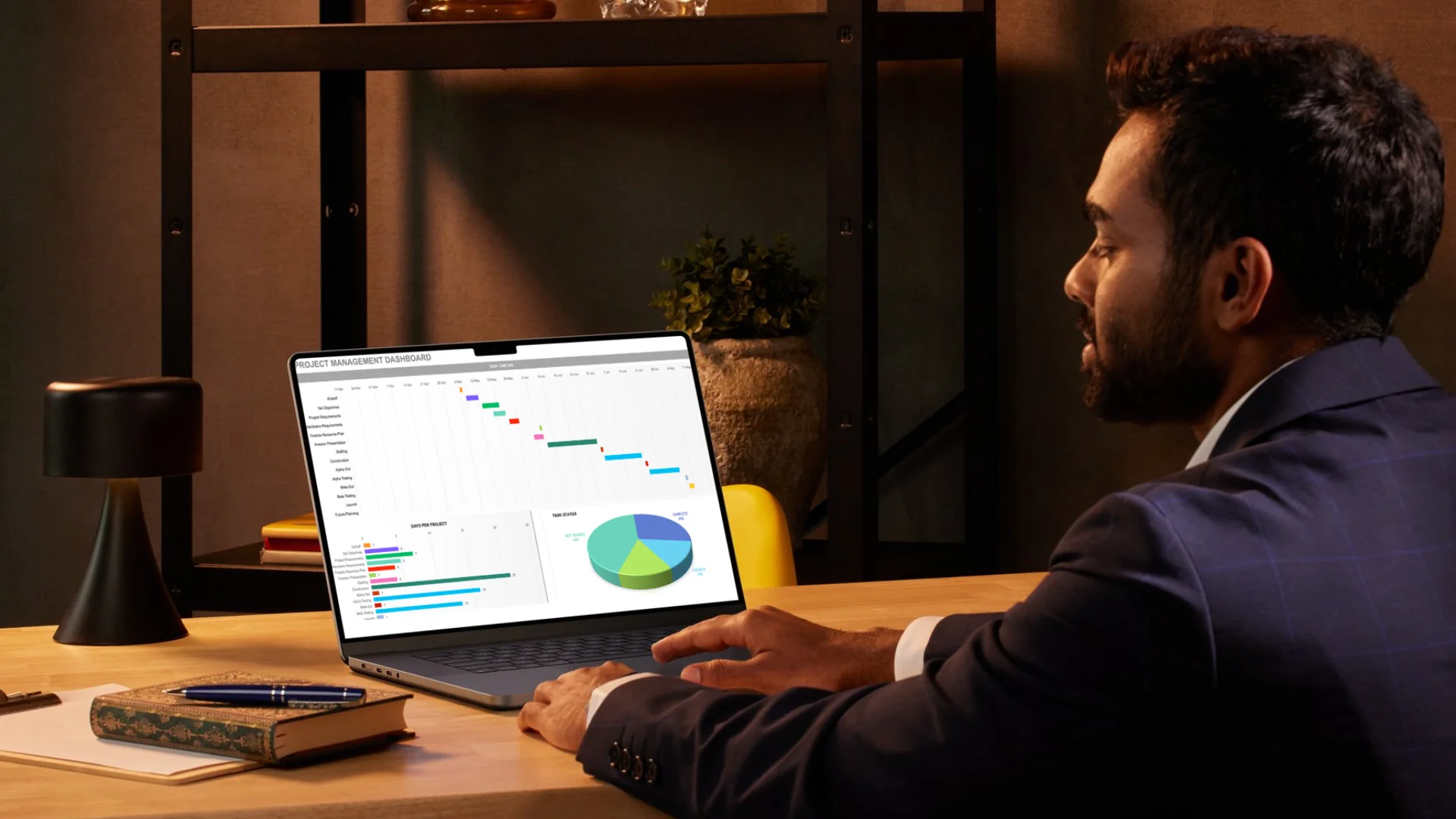Free Rental Yield Property Calculator

Becoming a landlord can be an exciting prospect. You get a steady stream of income, potential for property value growth, and you own a tangible asset.
But, owning a property investment also comes with its challenges.
You must consider factors such as rental rates, vacancy periods, and maintenance costs. Without a clear picture of your potential returns, it’s risky to invest in a rental property.
One key term you should know is ‘rental yields,’ which is how much income your property generates compared to its value.
In this guide, we’ll explain what rental yield is, why it matters for your buy-to-let, and how to calculate it to make sure your investment is worthwhile.
Is Your Rental Property Worth It?
Before you dive into the full article, use the rental yield calculator to gauge your potential returns.
It’s easy and convenient.
With just a few clicks, you can quickly see a property’s earning potential.
Feel free to run the numbers as often as you need. Remember, the more accurate your details, the more reliable your results will be.
What is Rental Yield?
Rental yield is a simple way to measure the return on investment (ROI) you can expect from a buy-to-let property.
This is a key metric that shows you how much money your rental property makes each year.
While rental yield is a great starting point, it doesn’t tell the whole story. Because it only considers the gross income–the total rent you receive each year.
In reality, owning buy-to-let investments can be costly. Expenses such as mortgage repayments (if you have one), letting agent fees, maintenance costs, and property insurance can slash your rental income.
Net rental yield takes these costs into account, giving you a more realistic picture of your potential profit.
Both rental yield and net rental yield are key for evaluating the financial performance of buy-to-let properties in the UK.
Why is Rental Yield Important?
As with every investment, you want to make sure that your investment is worthwhile.
This means looking at what you might gain against what you might lose.
By calculating the rental yield, you can understand if a buy-to-let property investment can actually make you money.
A high rental yield means your investment is paying off well, bringing in a strong return relative to the property’s price.
This measure also helps you make smart buying decisions. It shows which properties or areas offer better earnings, helping you target your investments wisely.
Plus, rental yield lets you fairly compare different properties, no matter their size or location.
If you’re looking for financing, lenders often check rental yield to decide if a property is a good risk.
A good rental yield can help you get a loan by proving the property can cover its costs.
What Makes A Good Rental Yield?
The average rental yield in the UK is currently 6.13%. This is based on the average house price of £282,000 and the highest average annual rent recorded between 2021 and 2022, which was £17,300.
But, as a rule of thumb: a good rental yield can be around 5% to 8%. This can vary greatly depending on the location and property type.
Besides these figures, here are a few key things you should also consider:
House Prices
The price you pay directly affects your rental returns. Higher purchase prices mean you need to charge more rent to get a good return.
Keeping an eye on property price trends helps you buy at a good value, which could boost your yield.
You can check house prices here.
Tenant Demand
Areas with high rental demand typically allow you to charge higher rents and experience fewer vacancies.
Look for places with job growth, universities, or new local developments, as these tend to attract more tenants.
You can also ask letting agents to know what’s happening in the rental market. They can give you valuable information on tenant demand and help you estimate potential rental income for specific areas.
Buy-to-Let Mortgage
Your mortgage details matter a lot. The interest rate and type of mortgage you choose directly affect your monthly payments.
With lower interest rates, you can reduce costs and potentially increase your yield if rent stays the same.
Furthermore, it’s wise to have an exit strategy. Landlords often choose interest-only mortgages to lower monthly payments.
If you choose this type of mortgage, most lenders will require a robust exit plan when the loan term ends. You could plan to sell the property, refinance it, tap into personal savings, or sell other assets to cover the mortgage.
Consulting a good buy-to-let mortgage broker is the best way to deal with this. They can help you understand the different mortgage options, find competitive rates, and create a financial plan that fits your investment goals.
To connect with your ideal mortgage broker, simply click here.
How To Calculate Rental Yield?
Calculating rental yield is a breeze. For starters, here’s the formula:
For Rental Yield:
Rental yield (%) = (Annual rental income / Property value) x 100.
For Net Rental Yield:
Net Rental Yield (%) = ((Annual Rental Income – Annual Expenses) / Property Value) × 100
The quickest and easiest way, you can use our rental yield calculator above. But, here’s how you can do it yourself:
- Gather your numbers. You’ll need the property’s annual rental income and purchase price.
- Do the maths. Divide the annual rent by the property price.
- Multiply by 100. This turns your answer into a percentage, making it easier to understand.
For example, let’s say you buy a flat for £150,000 and rent it out for £12,000 a year.
Rental Yield
- (£12,000 annual rent) / (£150,000 purchase price) = 0.08
- 0.08 x 100 = 8%
To calculate the net rental yield, let’s consider you have some annual expenses related to your property, such as maintenance, property management fees, and insurance.
Example Expenses:
- Maintenance: £500
- Property Management Fees: £600
- Insurance: £300
- Total Annual Expenses: £1,400
Net Rental Yield
- (£12,000 annual rent – £1,400 annual expenses) / (£150,000 purchase price) = 0.0707
- 0.0707 x 100 = approximately 7.07%
Now, if you’re a potential landlord, you might be thinking where can you get the figures?
Annual Rent and Property Value
First, you can speak with local letting agents. They can provide estimates based on similar properties they manage.
You can also check current rental listings in your area with websites like Rightmove or Zoopla. Try checking the best buy-to-let locations in the UK here.
Expenses
Reach out to property managers for a breakdown of typical costs such as management fees and maintenance.
Also, research online for averages on insurance, taxes, and other overheads.
Generally, you might expect annual expenses to range from 10% to 30% of your rental income, depending on property condition and management style.
If you don’t have the time to deal with buy-to-let calculations, an accountant can help. They can calculate your rental yield for you and gather all the relevant financial information, including income and expenses from your property.
Key Takeaways
- Rental yield shows how much money you can make from a rental property, calculated as a percentage of its value.
- Gross rental yield is based on total rent, while net rental yield considers costs like maintenance, mortgage payments, and insurance for a clearer profit picture.
- A good rental yield in the UK typically ranges from 5% to 8%, but this varies by location, property type, and market conditions.
- House prices, tenant demand, and mortgage details play a big role in determining rental yield; areas with high demand and reasonable property prices usually offer better returns.
- To calculate rental yield, divide the yearly rent by the property value and multiply by 100. For net yield, subtract yearly costs before dividing.
- Knowing your rental yield helps you pick the right property, compare options, and show lenders the property can cover its costs.
The Bottom Line
Buy-to-let investments can bring good returns through rental income, but managing those returns wisely is key. Here’s what to consider before diving in:
- Can you handle the ongoing costs beyond the purchase price?
- How will changes in tenant demand affect your rental income?
- Do you have a solid exit strategy for your mortgage?
Always proceed with caution and seek expert advice before investing.
Consulting a buy-to-let mortgage advisor can greatly assist you. They can help you find the best mortgage rates, understand complex regulations, and tailor a financial plan to meet your investment goals.
Need a broker? Contact us. We’ll connect you with a buy-to-let mortgage advisor who can help you make informed and advantageous property investment decisions.
Get Matched With Your Dream Mortgage Advisor...

Frequently asked questions
How can I improve my rental yield?
Strategies to improve yield include reducing expenses (maintenance, letting agent fees) or increasing potential rent by targeting the right tenants or renovating the property (within reason).
What are some of the risks of buy-to-let investment?
Property values can fluctuate, and there can be periods of vacancy where you won’t receive rent. Unexpected repairs and maintenance costs can also impact your profit.




